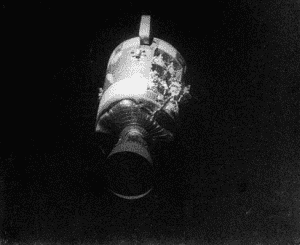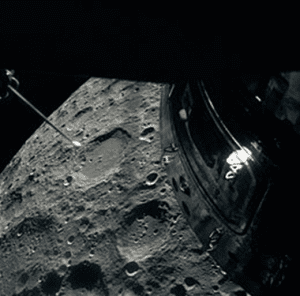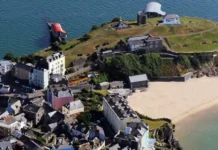A Short History of the Apollo Manned Lunar Missions
When Sputnik 1 was launched into outer space and orbited the Earth on 4thOctober 1957, the Soviet Union had won the Space Race and four years later,they scored a second win over the United States on 21st April 1961 when Russian cosmonaut Yuri Alekseyevich Gagarin became the first man in space. If that was not enough, a third win happened on 6th June 1963 when Valentina Vladimirovna Tereshkova became the first woman to fly into space and orbited the Earth an incredible forty-eight times during a three-day mission. She is still the only woman to go into space alone. While this makes fascinating reading for anyone interested in space travel, there was one other race that both Russia and the US wanted to win more than any and that,was to be the first to land a man on the Moon and return him safely to Earth. On 20thJuly 1969,the US won that race when Apollo 11’s Lunar Module the‘Eagle’ landed in the Sea of Tranquillity at 20.17 UTC (Coordinated Universal Time) and then at 03.56, Commander Neil Armstrong stepped onto the surface.
While this makes fascinating reading for anyone interested in space travel, there was one other race that both Russia and the US wanted to win more than any and that,was to be the first to land a man on the Moon and return him safely to Earth. On 20thJuly 1969,the US won that race when Apollo 11’s Lunar Module the‘Eagle’ landed in the Sea of Tranquillity at 20.17 UTC (Coordinated Universal Time) and then at 03.56, Commander Neil Armstrong stepped onto the surface. 
Black and white television screens across the world flickered as they relayed remark able images of Armstrong as he placed his foot onto the surface of Earth’s only natural satellite, and then spoke the most famous words in space history…. ‘one small step for man; one giant leap for mankind.’What Armstrong had meant to say was…. ‘one small step for (a) man; one giant leap for mankind.’
The National Aeronautics and Space Administration (NASA) was established on 1st October 1958 and quickly became the world’s leading space industry through bringing together aerospace engineers, computer scientists, astrophysicists, biologists, pilots, electronic technicians, medical consultants, meteorologists and many other skilled workers from around the globe. NASA has planned, organised and carried out incredible projects and missions such as Pioneer, Hubble, Voyager, Kepler, Skylab, Shuttle, Viking and of course Apollo which collectively,have helped mankind understand better our own solar system and our efforts to visit other planets. 
The crippled Apollo 13 Lunar Module
After Apollo 11’s success and between 1969 and 1972, six further manned lunar missions took place but sadly, global television interest declined after Apollo 12 until disaster struck Apollo 13 and the world once again, tuned into follow an Apollo mission that was in very serious trouble. Launched on 11th April 1970, Apollo 13 was the seventh manned mission and only the third to attempt to land man on the Moon. Commander James Lovell and Fred Haise were destined to land in the fifty-mile wide Fra Mauro Crater to explore its surrounding highlands, while replacement Command Module Pilot Jack Swigert would remain in orbit around the Moon.  The Moon from ‘Aquarius’
The Moon from ‘Aquarius’
Fifty-six hours into their mission and 205,000 miles from Earth, Lovell radioed Ground Control at Houston and made the famous announcement that Apollo 13 had‘a problem’. The crew heard an explosion shortly after Swigert had switched on ‘stirring fans’ in the lunar module’s No 2 Oxygen tank at the request of Ground Control and the Command Module had vapour spouting out into space and the craft was out of control but more concerning, was the rapid loss of electric supply.
NASA had to act fast and although close to the Moon, the mission was aborted by Flight Controller Gene Kranz at Houston who now had one priority and that, was to get all three crew members into ‘Aquarius’ within fifteen minutes so that the Command Module could be shut down. ‘Aquarius’ was to serve as a‘lifeboat’ because that was the only way Kranz believed he could get all three crew members safely returned to Earth and calling for silence in the Control Room, he calmly told his team… ‘people, failure is not an option.’
As the engineers started to feed-back data to Kranz and with the crew of Apollo 13 kept in constant radio contact to describe what was happening inside the craft, rescue options were quickly assessed until finally only one was considered ‘workable’. Original crew member Ken Mattingly, who was thought to have had the measles, worked for hours on trying to establish how best to achieve minimal electrical power while still operating essential onboard computers and navigation systems required to return the crew to Earth. The engineers came good and on 17th April 1970, Apollo 13 splashed down in the South Pacific and was recovered by American amphibious assault ship USS Iwo Jima. On their reunion, Ken Mattingly told Lovell he did not have measles and following an extensive investigation, NASA concluded the cause of the explosion was a rupture of the No 2 Oxygen Tank.
The Apollo landing sites on the Moon are easy to find using either a telescope or good pair of binoculars. This lunar map identifies all six sites and numbers are those of the Apollo mission. It is interesting to note that even numbers run across the centre of the Moon from left to right while odd numbers centre aroundthe Seas of Tranquillity (11) and Serenity (15 & 17). The bright crater at the south of the Moon is Tycho named after 16th century Danish astronomer Tycho Brahe.
Programme of Apollo Manned Moon Landings
| Apollo | Launch Date | Landing Site | Lunar Module | Commander | LMP |
| 11 | 20 Jul ‘69 | Sea of Tranquillity | Eagle | Neil Armstrong | Edwin ‘Buzz’ Aldrin |
| 12 | 19 Nov ‘69 | Ocean of Storms | Intrepid | Charles Conrad | Alan Bean |
| 14 | 5 Feb ‘71 | Fra Mauro | Antares | Alan Shepard | Edgar Mitchell |
| 15 | 30 Jul ‘71 | Hadley Rille | Falcon | David Scott | James Irwin |
| 16 | 21 Apr ‘72 | Descartes Highland | Orion | John Young | Charles Duke |
| 17 | 11 Dec ‘72 | Taurus-Littrow | Challenger | Eugene Cernan | Harrison Schmitt |
Written by
Philip Thomas
Help keep news FREE for our readers
Supporting your local community newspaper/online news outlet is crucial now more than ever. If you believe in independent journalism, then consider making a valuable contribution by making a one-time or monthly donation. We operate in rural areas where providing unbiased news can be challenging. Read More About Supporting The West Wales Chronicle


























